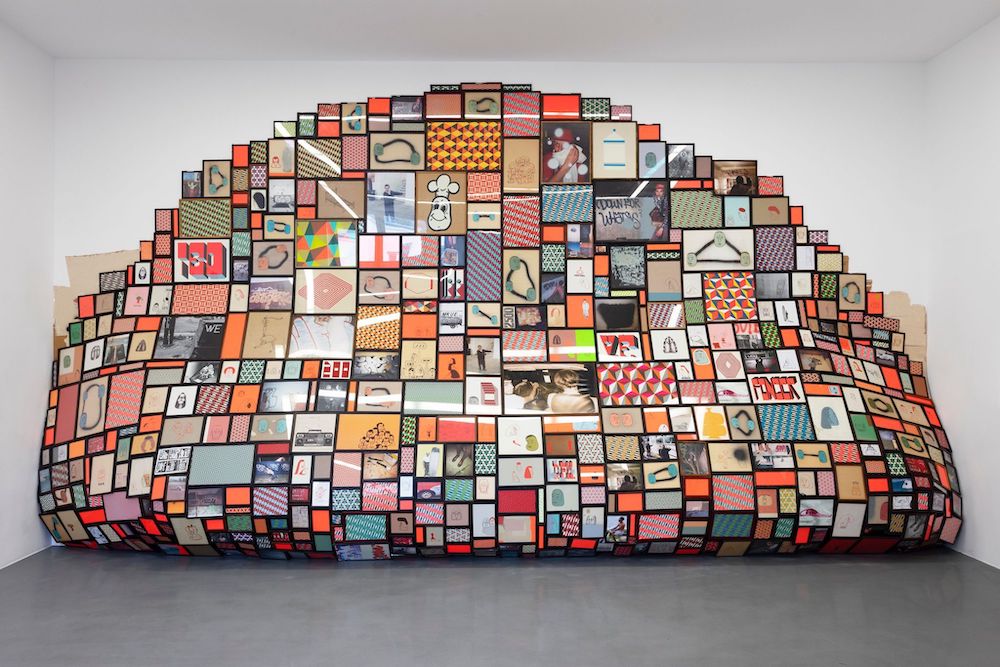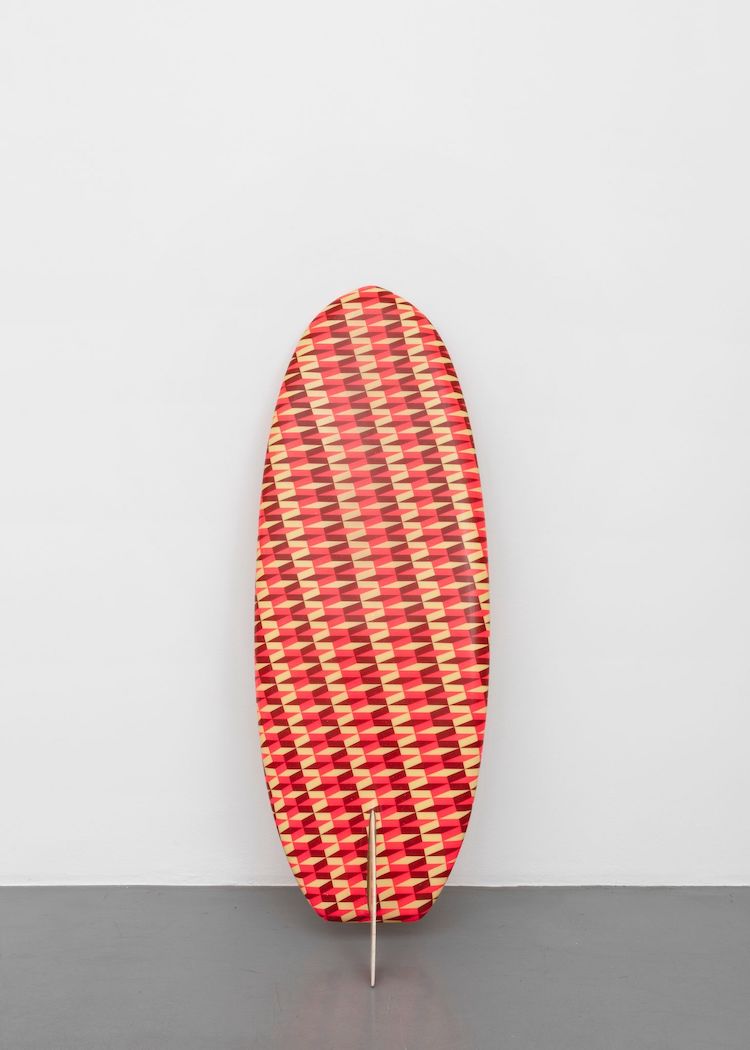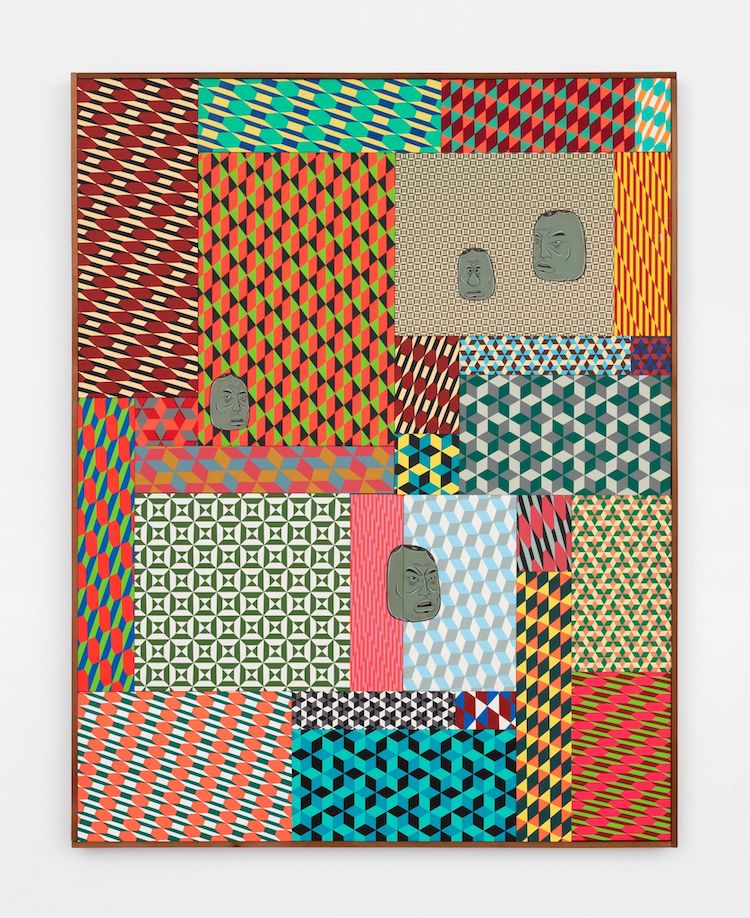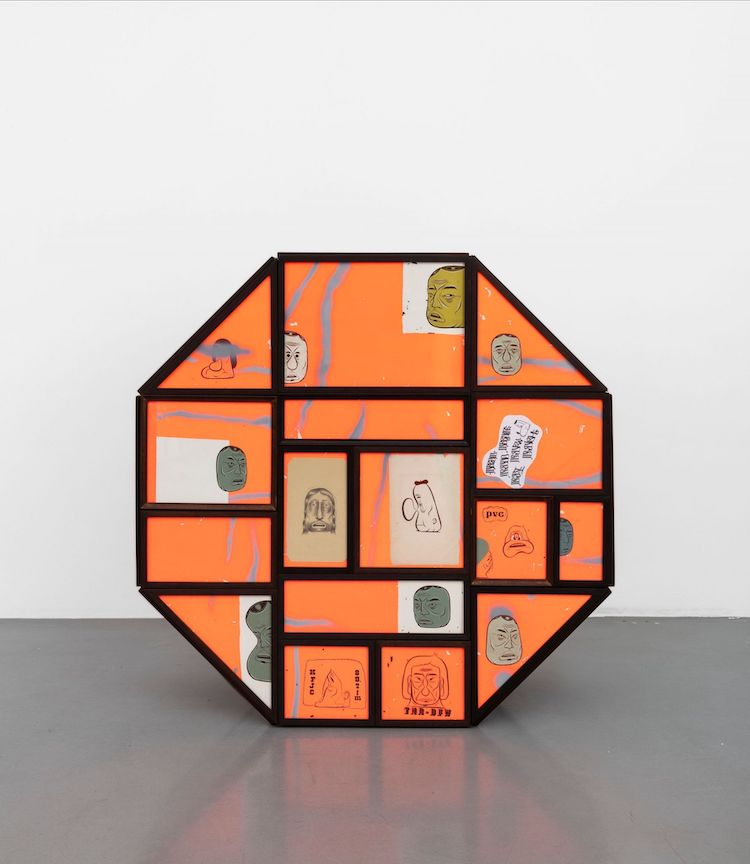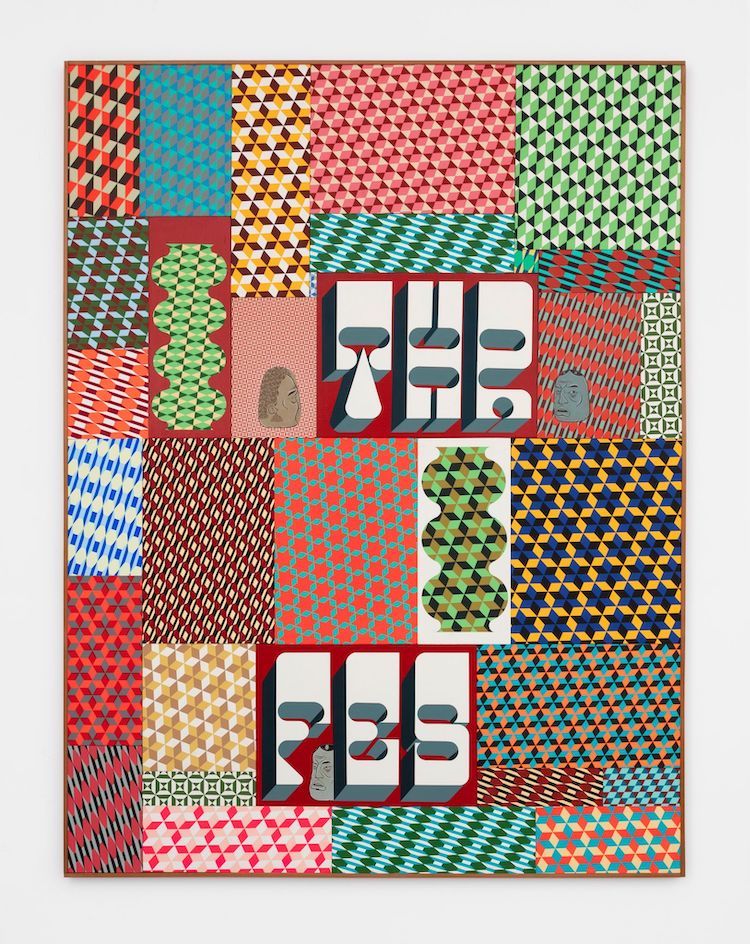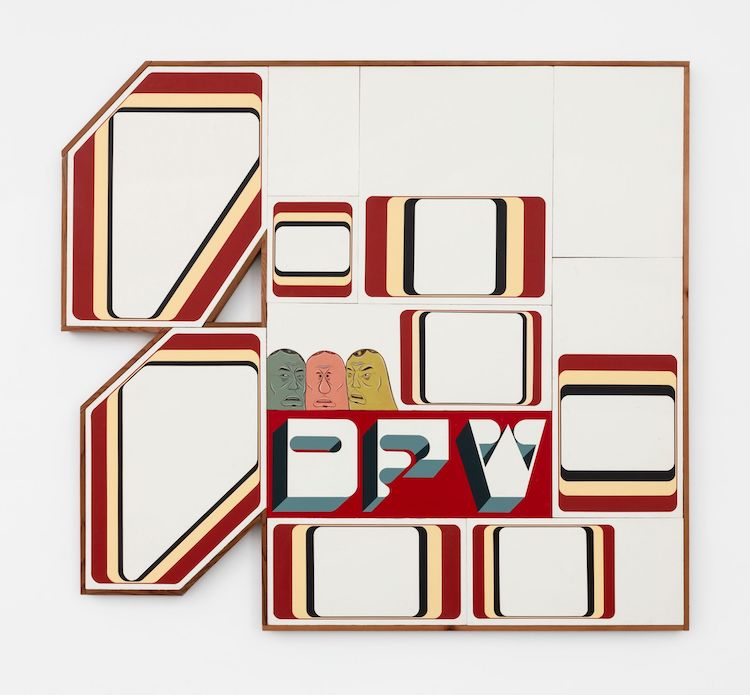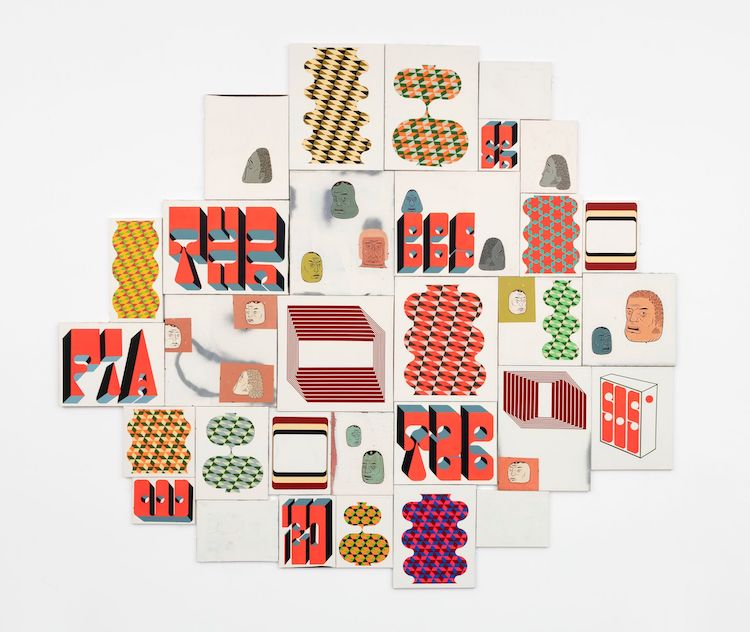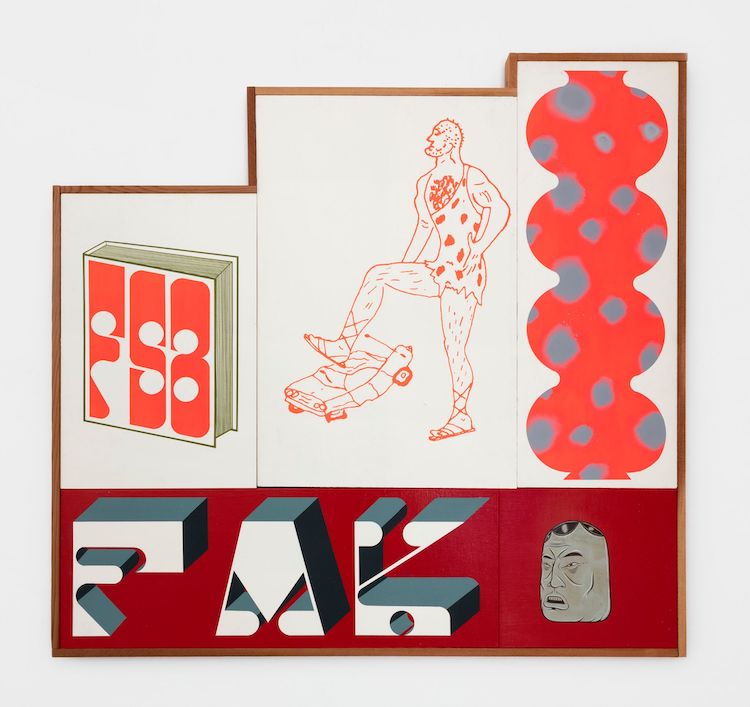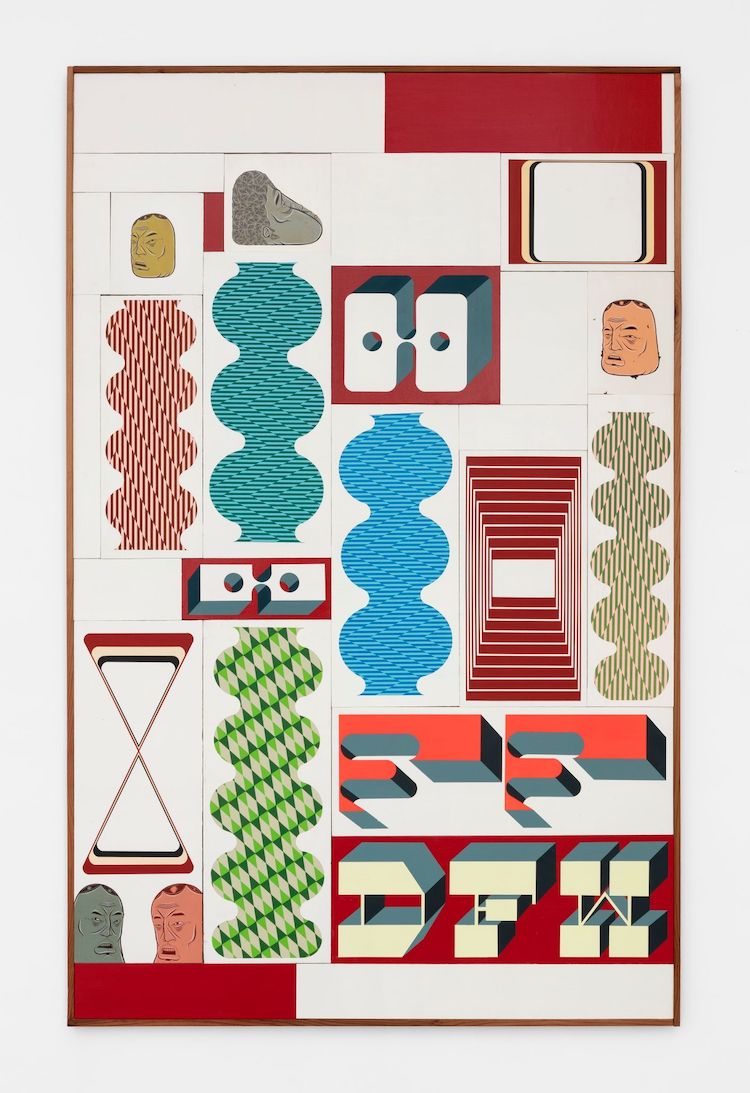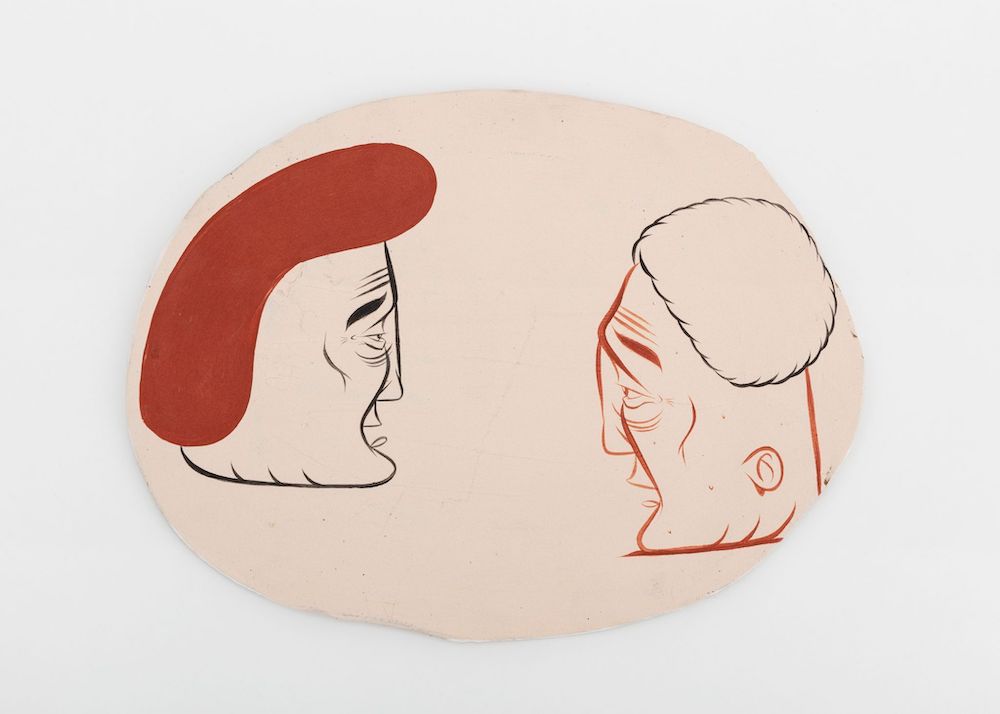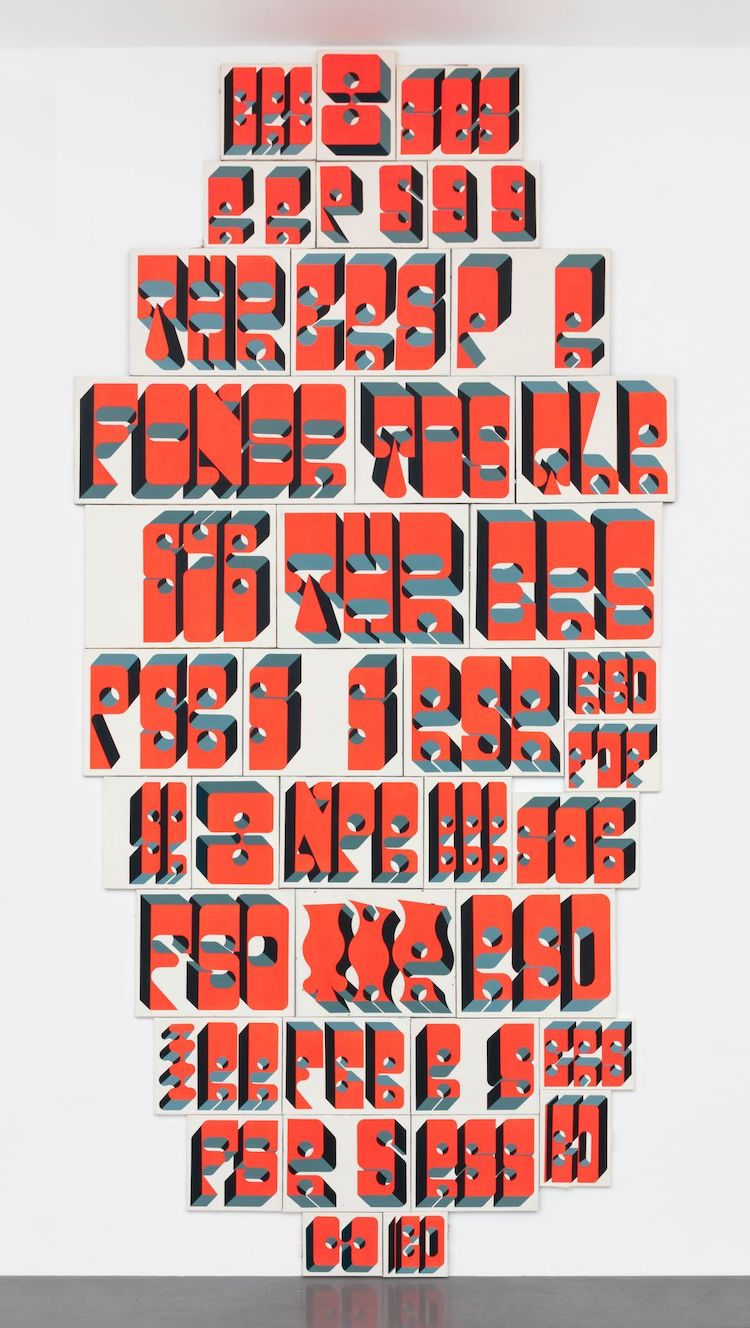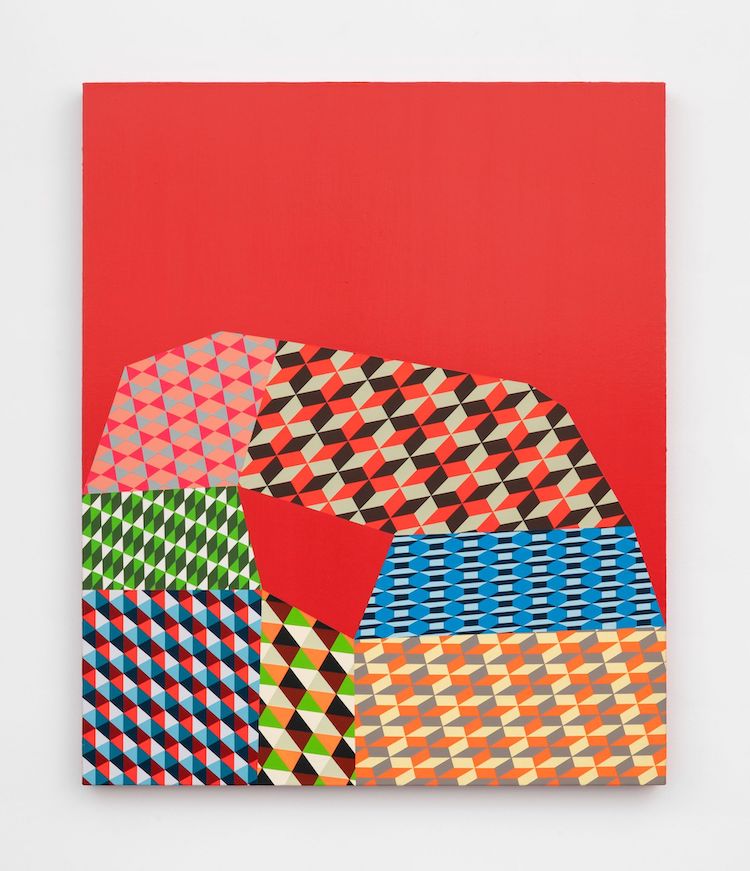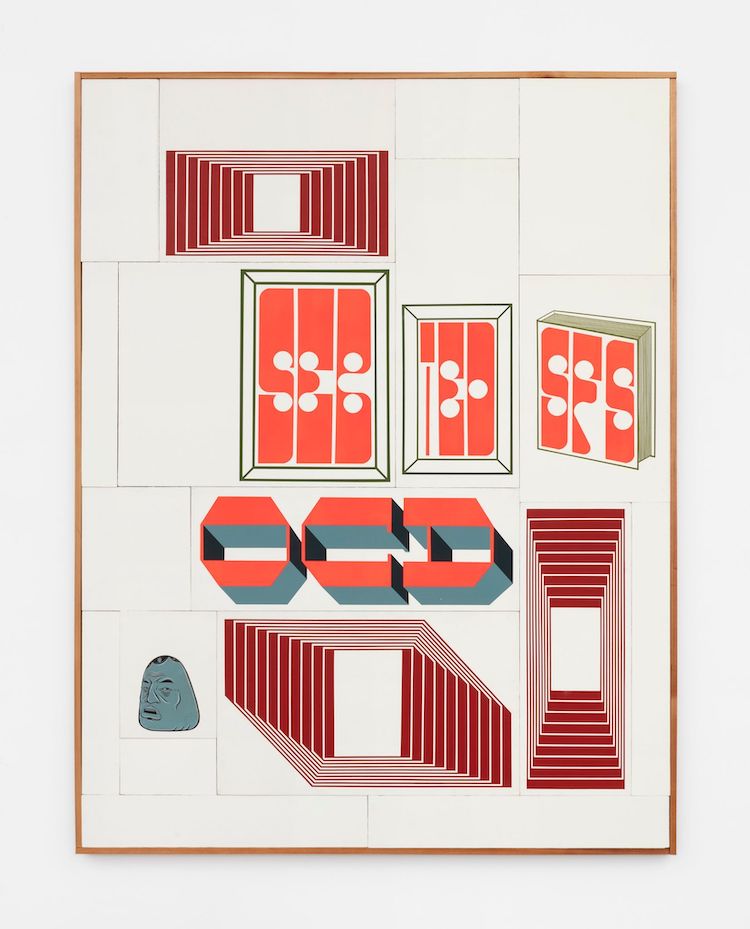Barry McGee has always been a master of contracting and expanding, often in the same show, and even more so on just one painting. Space is key, dense patterns juxtaposed (hey now!) with intentional openess. Colors match and contrast. Faces appear in chaotic bursts of maze-like shapes. Surfboards are leaned against a wall all by themselves, while a giant biomporphic collage that has been his signature for decades grows from a wall like a pulsating heartbeat. It's graffiti in theory, a sense of disorder while placement is so well-considered. McGee takes that essence of graffiti, the way we place things, they way vandalism's disorganization has a sense of belonging, and turned it into a particularly bold career.
Fuzz Gathering, Barry McGee's newest solo show on view at Perrotin in Paris, is once again a culmination of his life's work: paintings, collage, sculpture, graffiti, surf culture, ceramics, photography, lettering, and abstraction. His faces emerge from that already described density, as if they have been overwhelmed with disarray but also perhaps made it all happen themselves and showed up to watch the theatrics take place. The gallery mentions reorganization in McGee's works, and that is such an apt observation. The chaos opens up the possibility of something new, something never seen. That graffiti instinct, so much part of this work, this sort of chameleon nature of McGee's persona, seems to really be at the forefront in the stark white space of Perrotin.
"What I love about graffiti is that no one knows who I am," McGee recently said. "It’s the feeling of pure freedom. I just have to change my name, and nobody cares about my tag. Graffiti is the only thing I can do without anyone appropriating it." At this point, that tag and moniker that McGee has made so famous, TWIST, stands for something more than just a graffiti name. TWIST was a game-changer, one who saw that intuition at the core of the art form and was able to open it up to the fine art world as a metaphor and a way of practice. He was an originator in that sense, and now decades and decades later, he is still perfecting that conversation and how to expand on what graffiti's core energy is all about. —Evan Pricco









